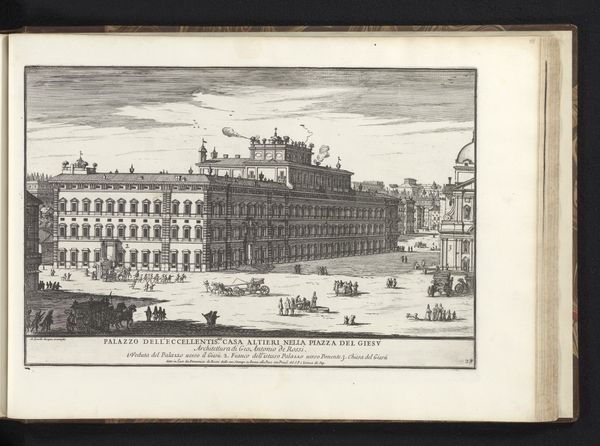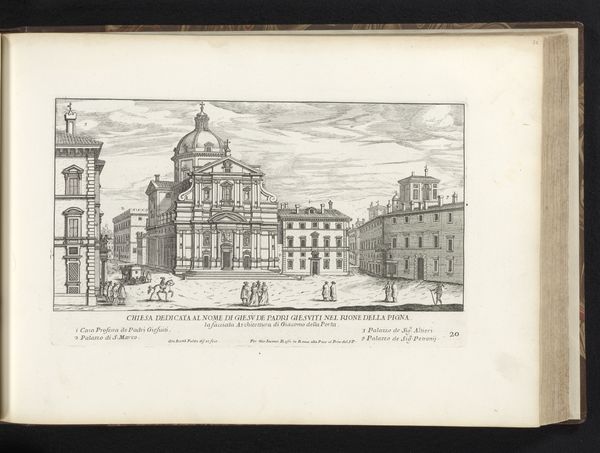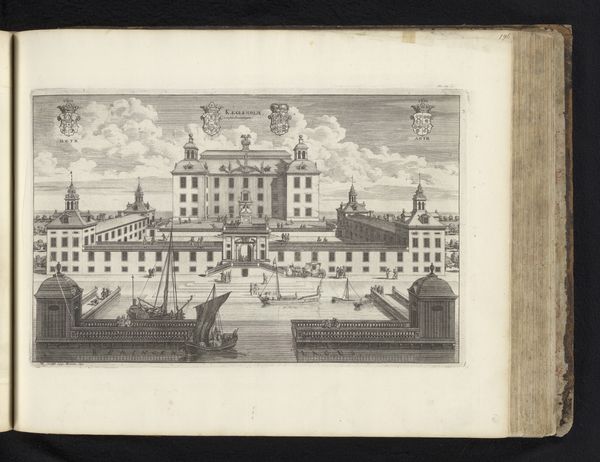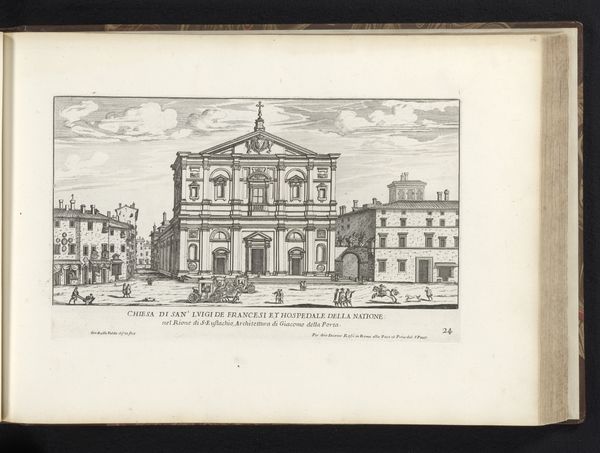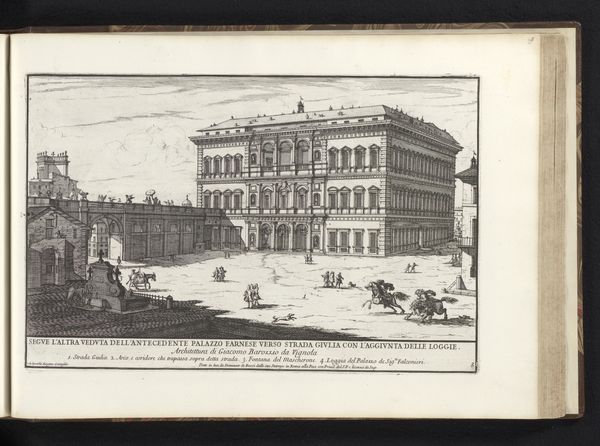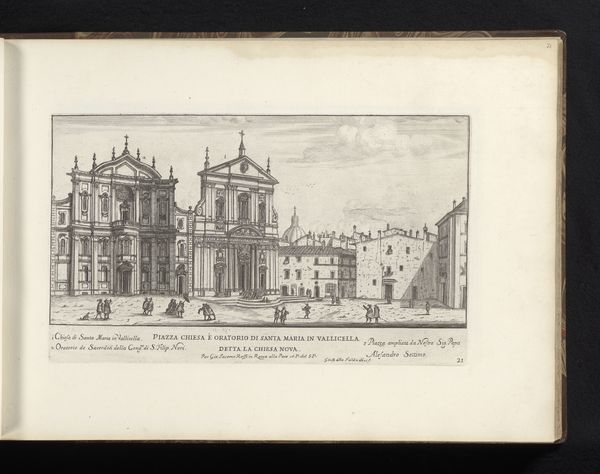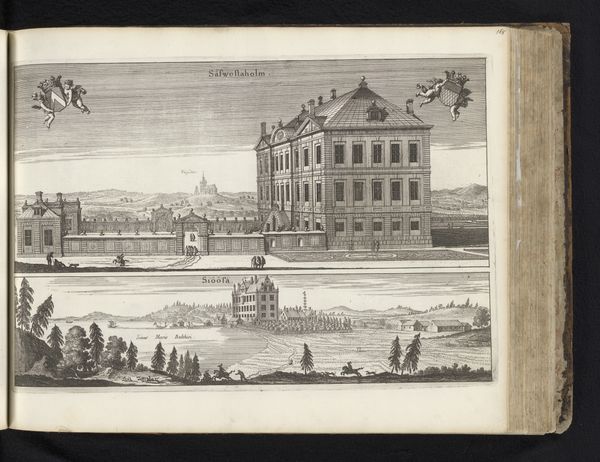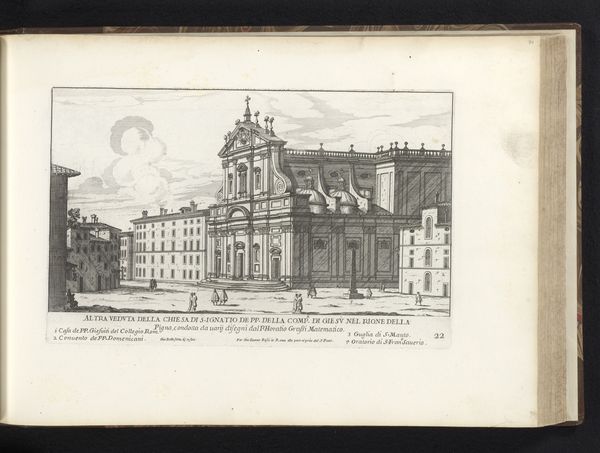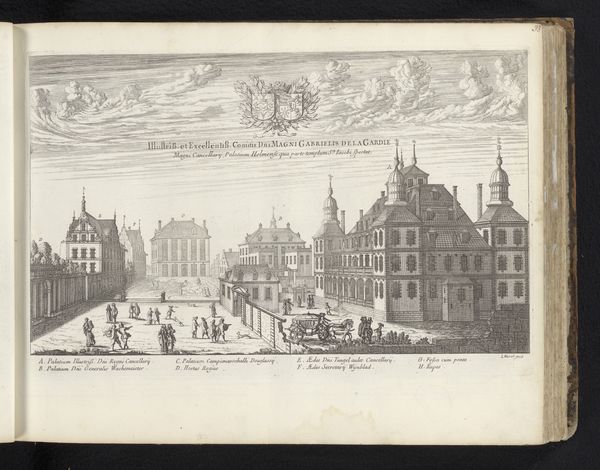
drawing, print, paper, engraving, architecture
#
drawing
#
baroque
# print
#
perspective
#
paper
#
line
#
cityscape
#
italian-renaissance
#
engraving
#
architecture
Dimensions: height 174 mm, width 291 mm
Copyright: Rijks Museum: Open Domain
Editor: Here we have Giovanni Battista Falda’s "San Girolamo dei Croati te Rome" from 1669 to 1670. It's a drawing, an engraving really, on paper showing a cityscape in a sort of linear style. I’m struck by how clearly the perspective is rendered, creating depth with precise lines. What catches your eye? Curator: Immediately, the systematic articulation of space, through the deployment of line and form, is significant. Consider the way the artist meticulously constructs the receding planes, defining the architectural volumes with unwavering precision. What semiotic implications arise from the use of line? Is line being used as symbolic code here? Editor: That’s a really interesting way of looking at it. I guess, in a very basic way, lines represent edges and surfaces? But the *type* of line, whether it's thick or thin or dashed...could denote a boundary or perhaps the artist’s feeling about something? Curator: Precisely! Reflect upon the use of perspective, not simply as a technique for creating spatial illusion, but as a structuring principle. Is it organizing visual experience to suggest hierarchies, like prioritizing the Church? The architecture itself reflects structure. The organization. Think of it as syntax that conveys meaning. Editor: I see. So, the artist isn't just showing us a place; they're building an argument, creating an impression about what's important within that place. Maybe they felt connected to this architectural landscape? Curator: The artist's intention remains elusive. However, by examining the formal relations—the interplay of lines, the construction of space—we move toward discerning a coherent structure, a system of signification inherent within the work itself. Editor: Wow, I never thought about an image having its own kind of...grammar. It’s much more than just a picture. Thanks for explaining all of this to me. Curator: A painting is merely a canvas covered in shapes if one neglects that a single line is an emphatic gesture! We only see meaning when we find an organizing idea and ask, “What is its shape?”
Comments
No comments
Be the first to comment and join the conversation on the ultimate creative platform.
